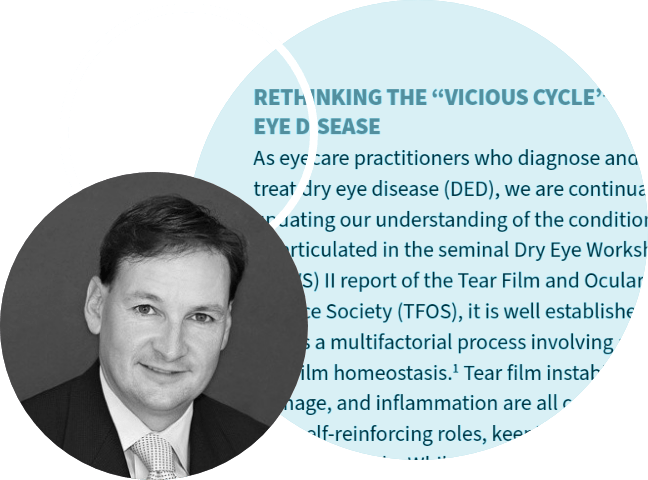~86% of patients experiencing dry eye disease (DED) have excessive tear evaporation due to MGD as the root cause3
Excessive tear evaporation is a direct consequence of MGD and a leading cause of DED signs and symptoms.4
MGD=meibomian gland dysfunction.

Not all treatments address evaporation in DED5-10
Associated with decreased quality of life and high economic burden, DED is a modern-day disorder in which digital lifestyle is a major contributor.10-12

If evaporation is not addressed, signs and symptoms of DED may chronically persist13
Examining DED with a focus on evaporation reveals a need to rethink current management approaches.


Review an expert perspective on DED written by ophthalmologist Darrell E. White, MD, the founder of SkyVision Centers.

NEW
Review an expert perspective on the mechanisms of DED written by optometrist Paul Karpecki, OD, FAAO, chief clinical editor for Review of Optometry.
SIGN UP
Sign up to stay informed about dry eye disease (DED), find out what your peers think about managing DED, and get updates about the advancements that Bausch + Lomb is pursuing.


